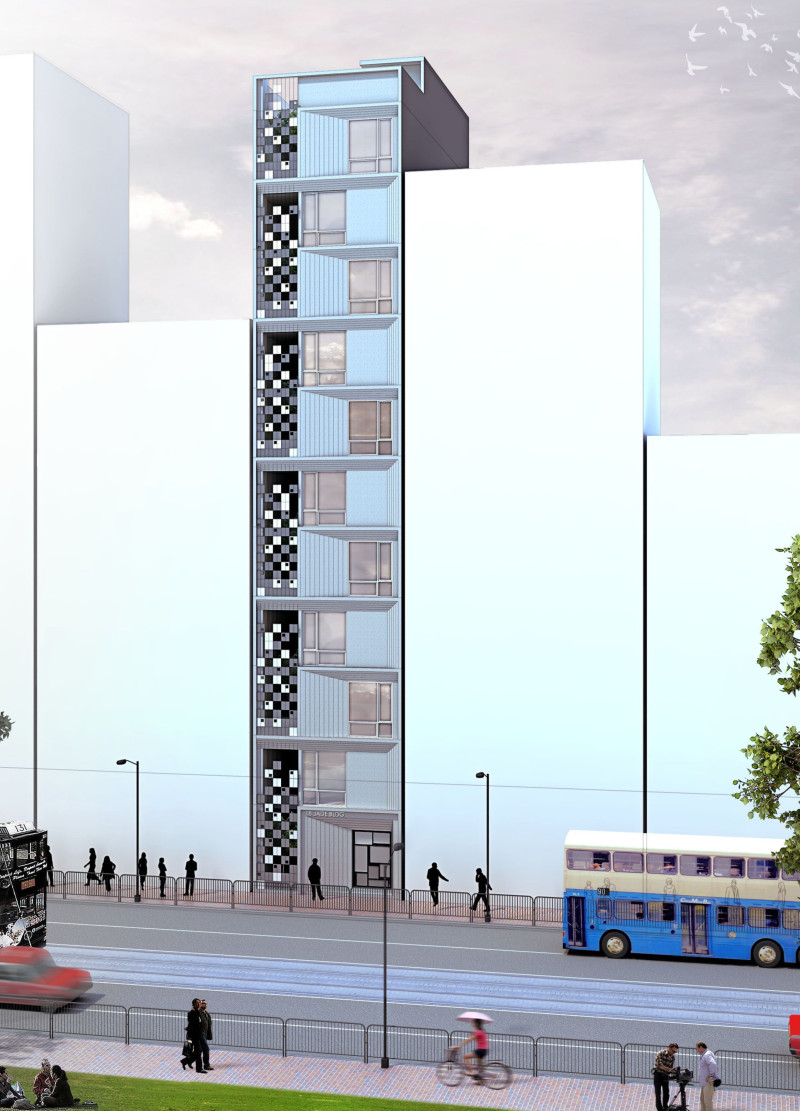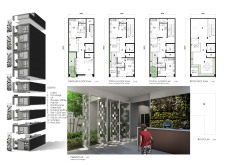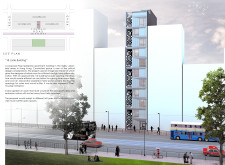5 key facts about this project
The core concept of the project revolves around creating a space that fosters connection among users while offering a seamless integration with nature. This notion is manifested through a layout that emphasizes openness and fluidity, allowing natural light to permeate the interiors. Extensive use of glass facades not only enhances visibility but also facilitates a dialogue between indoor and outdoor areas. The resulting spaces are characterized by their vibrant atmosphere, encouraging interaction and engagement among occupants.
In terms of function, the project accommodates a diverse range of activities, ensuring that it serves the community's varied needs. The design includes multipurpose areas that can easily adapt to different events, fostering a sense of versatility. This flexibility is further accentuated by movable partitions that allow for the reconfiguration of spaces as necessary. Such thoughtful planning reflects a deep commitment to the users’ experience, ensuring the space remains relevant and useful over time.
The materials selected for this architectural endeavor play a crucial role in conveying its design ethos. A combination of locally sourced stone, timber, and sustainable composites has been employed to not only enhance aesthetic value but also to promote sustainability. The use of these materials is indicative of an architectural philosophy that prioritizes environmental responsibility, aligning with contemporary trends that favor eco-friendly practices. The tactile quality of wood, contrasted by the sleek nature of glass, creates a dynamic interaction within the spaces, while the stone provides a grounding element that connects the structure to the earth.
Attention to detail is evident throughout the project, from the carefully considered proportions of the windows to the choice of textures used in wall finishes. These elements contribute to an overall sense of harmony and cohesion within the architecture. Unique design approaches are illustrated through custom fixtures and furnishings that echo the project's aesthetic identity, enhancing the personal touch that distinguishes this space.
Landscaping further complements the architectural design, with outdoor spaces integrated into the overall plan. Native plant species are strategically positioned to contribute to biodiversity while minimizing maintenance needs, exemplifying a design approach that respects the local ecology. Pathways weave through the landscape, connecting different sections of the project and encouraging exploration.
The architectural outcomes of this design project are significant, not only in terms of its palpable visual presence but also in its potential to elevate community experiences. By prioritizing user interaction and environmental sustainability, this architecture stands as a testament to thoughtful and intentional design.
As you delve deeper into the intricacies of this project, it is encouraged to explore the architectural plans, sections, and other architectural designs that provide further insights into the thoughtful design decisions made throughout the process. Engaging with these materials can enhance your understanding of the architectural ideas that underpin this remarkable project.


























